What do you think makes for an engaging video? I used to think that any video under 10 minutes couldn’t offer real value or be truly engaging. Short videos? Those were for people with short attention spans.

Then, I stumbled upon a four-minute video about productivity hacks. I almost scrolled past it, but something about the thumbnail caught my eye. After watching it, I replayed it, took notes, and shared it with friends.
![→ Access Now: Video Marketing Starter Pack [Free Kit]](https://no-cache.hubspot.com/cta/default/53/8f27c677-d952-4663-8787-bf65c6a1ecf2.png)
This puzzled me. How did such a brief video capture my attention? I began noticing that the videos I enjoyed most, regardless of length, had certain qualities.
They started with a hook, told a story, and were visually dynamic. Videos featuring experts or social proof were also more shareable.
I realized that video engagement isn‘t about length — it’s about psychology. And as video marketing continues to evolve, this shift in perspective opened my eyes to the psychology behind creating engaging videos.
I’ll cover these insights in this guide to help you drive more engagement and increase your video’s impact.
6 Psychology-Backed Hacks for Engaging Video Content
- Spark curiosity.
- Hook your audience.
- Make it visual.
- Tell a story.
- Leverage social proof.
- Interrupt patterns.
1. Spark curiosity.
As I delved into the research on attention and engagement, I discovered something fascinating: curiosity isn‘t just a casual interest — it’s a powerful force that shapes how we process information.
In their study, “Curiosity and the Economics of Attention,” Zachary Wojtowicz and George Loewenstein shed light on this powerful force. As I studied their findings, I was struck by how they captured the mechanisms behind human attention.
They argue that “curiosity, as one of the most significant psychological forces associated with the allocation of attention, plays an increasingly important role in the modern economy.”
But what makes curiosity so potent? According to Wojtowicz and Loewenstein, it‘s all about the brain’s constant quest for sense-making.
“The brain is constantly engaged in simplification and model-building in its quest to process a flood of incoming sensory information into an actionable form,” they explain. This drive for understanding makes curiosity a compelling force in guiding our attention.
I find this next insight particularly compelling because it explains so much about our information-seeking behavior.
Curiosity operates on a dual reward system. The researchers note: “Curiosity likewise features both a carrot and a stick. Prolonged consideration of a difficult riddle can be an excruciating experience, but discovering the answer is often highly pleasurable.”
This push-pull dynamic is what makes curiosity-driven content so engaging.
Through my analysis of this research, I’ve identified three key ways to harness the power of curiosity.
- Craft intriguing titles. Create headlines that hint at valuable information without giving everything away. For example, “Good Isn’t Good Enough: CMO Secrets To Leveling up Your Team | INBOUND 2024” suggests a valuable insight while leaving the specifics tantalizingly out of reach.
- Use the inverted U-curve of novelty. Curiosity intensity follows an inverted U-curve in response to stimulus novelty. Slight exposure piques curiosity, but too much information can satiate it. To maximize curiosity, strike a balance between the familiar and the novel. For example, this “Spread Too Thin” commercial by HubSpot is short and to the point yet leaves much unsaid. It provides just enough information to pique interest without overwhelming the viewer.
- Create strategic information gaps. Pose questions or present partial information that your content will later resolve. This taps into what George Loewenstein calls the “information gap theory of curiosity.”
By implementing these strategies, you‘re not just creating video content — you’re tapping into a fundamental human drive.
As Wojtowicz and Loewenstein‘s study shows, curiosity isn’t just a fleeting emotion; it’s a powerful tool in the economics of attention.
2. Hook your audience.
Capturing and maintaining an engaged audience quickly is crucial. When creating engaging video content, your hook determines whether viewers stay or scroll. Let me show you a perfect example of how this works in practice in the video below.
When I watched this video, I saw several hooks at work that make it highly effective. Let me break them down:
- Emotion trigger. The casual “All right” opening and playful “Boom, nice little happy marriage” create an approachable, positive tone that draws viewers. What fascinated me about this hook is how it creates an instant emotional connection. I’ve noticed that when content balances professionalism with a personality like this, engagement typically increases.
- Relevance. Phrases like “If you’re a business owner or marketer” and “drive traffic and sales” immediately identify the video’s audience and goal. What I find particularly clever is how it then broadens its appeal with “services, software or soy lattes,” showing viewers that this content is relevant regardless of their specific business.
- Immediate value. What strikes me most is how it communicates value. Within just 22 seconds, viewers know exactly what they’ll learn and why it matters to their business.
What I found particularly fascinating about this case was how it validated my theories about psychological hooks in a real-world setting.
Ibis Budget, an international budget hotel chain, created a series of Reels ads for Facebook and Instagram that exemplified these same psychological hooks:
- Visual impact and novelty. They used “thumb-stopping” visuals and unexpected elements, like a hotel “talking back” to a guest, to break through the noise of typical ads.
- Relevance and immediate value. The ads quickly showcased key hotel features (food, bathrooms, beds), immediately demonstrating value to budget-conscious travelers.
- Emotion trigger. By making the content “entertaining” and “relatable,” they tapped into positive emotions and humor.
- Platform-optimized novelty. I’ve noticed that platform-specific content performs significantly better. Ibis Budget proved this by creating content specifically for the Reels format.
The results confirmed what I’ve observed about well-crafted hooks:
- 25% greater reach for campaigns using the Reels placement, compared to usual placements without Reels
- 17% lower cost per booking using the Reels placement, compared to usual placements without Reels
From studying these examples and their results, I‘ve concluded that effective hooks aren’t just about grabbing attention — they‘re about creating an immediate connection between the viewer’s needs and your solution.
Whether you’re creating a simple video introduction or a full marketing campaign, these psychological principles remain consistently powerful.
3. Make it visual.
While studying engagement patterns, I‘ve found that visual elements play a far more crucial role than we realize.
What fascinates me isn’t just their aesthetic appeal, but how fundamentally they align with how our brains process information.
The HubSpot team ran a survey of 328 video marketers in early Q4 which showed the growing importance of visual content.
Similarly, research by Mayer and Moreno on multimedia learning presents a compelling argument for the strategic use of visuals.
The first time I dove into their research, it completely changed how I saw the power of visuals in boosting learning and engagement
Their cognitive theory of multimedia learning argues that “people learn more deeply from words and pictures than from words alone.” This isn‘t just about preference: it’s about cognitive processing.
Mayer and Moreno explain that our working memory has two channels for information acquisition and processing: a visual channel and an auditory channel.
When we use both channels simultaneously through well-designed visuals and complementary audio, we can significantly enhance learning and engagement.
Here are three critical implications for engagement:
- Cognitive load management. Visuals help in distributing information processing across both channels, reducing cognitive load and making content easier to digest.
- Dual coding. When information is presented both visually and verbally, it creates two mental representations, enhancing recall and understanding.
- Emotional resonance. Visuals have a unique capacity to evoke emotions quickly, fostering a deeper connection with the content.
To leverage these insights, here are some tactics I recommend.
Use Complementary Visuals
When creating a YouTube video or explainer video, ensure your visuals enhance rather than simply repeat your narration.
For example: In an instructional video on time management, rather than just showing a talking head explaining tips, the video could show visualizations of a clock ticking, calendar pages flipping, or a “to-do list” being checked off.
Why it works: These visuals complement the narration by adding context and reinforcing the concept, which can make the abstract idea of “time management” more concrete and relatable for viewers.
Employ Visual Metaphors
I’ve observed that you can also make abstract concepts concrete through carefully choosing visual representations.
For example: If a video discusses “growth in business,” rather than simply stating statistics or facts, visuals like a plant growing or a balloon expanding can represent this growth.
Why it works: Visual metaphors turn abstract ideas (like growth, transformation, or innovation) into something tangible, engaging the viewer’s imagination and helping them form a stronger conceptual connection.
Balance Complexity
Use visuals to simplify complex ideas, but avoid overwhelming viewers with too much visual information at once.
For example: In a video explaining data analytics, show a simplified, animated flowchart rather than a complicated screen full of data points. Visuals can introduce one element at a time, with each step building upon the previous.
Why it works: This gradual progression helps viewers follow the logic without becoming overwhelmed by details. Simplifying complex ideas makes the information digestible and keeps viewers engaged without causing cognitive overload.
These visual strategies help you engage with the audience more effectively, whether you’re creating short-form video content or longer presentations.
Pro tip: I’ve found that there are a lot of tools to help create balanced, professional visuals. For example, with Clip Creator, you can transform a simple text description into a complete video, automatically balancing visual elements through customizable slides and transitions.
The tool handles the complexity of visual arrangement — from font styling and image placement to audio tracks — while letting you maintain creative control.
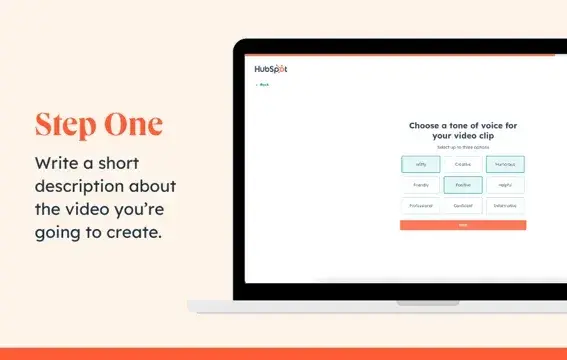
4. Tell a story.
While researching audience engagement, I discovered that storytelling isn‘t just a nice-to-have — it’s fundamental to how we process information.
When I explored Matthew Dicks’ work in Storyworthy, his assertion that “we are hardwired to tell and listen to stories” resonated deeply with my findings about creating lasting impact with content.
Let me analyze a video that beautifully demonstrates these storytelling principles in action.
What struck me most about this creator’s approach was her masterful blend of personal experience with practical insights.
Here are three key principles I’ve identified for effective storytelling.
Focus on emotion.
I‘ve noticed how the creator’s genuine excitement about business class travel and feature demonstrations creates an authentic emotional resonance. This authenticity consistently outperforms scripted enthusiasm.
Create conflict and resolution.
What I find particularly effective is how the video structures its narrative arc. The creator presents the algorithm challenge, and then methodically walks through five strategic solutions, each supported by real examples.
This clear problem-solution structure keeps viewers invested in the story.
Show transformation through specificity.
The most compelling aspect, from my perspective, is how the creator demonstrates transformation through concrete examples. From specific DM strategies to actual customer testimonials, she shows rather than tells her journey.
5. Leverage social proof.
I first learned about social proof when I noticed how I tend to check reviews before buying anything online.
Social proof, as defined by Robert Cialdini in Influence: The Psychology of Persuasion, is a psychological principle that encourages people to conform to the actions and beliefs of others, particularly in situations of uncertainty.
When unsure of the best course of action, we instinctively look to others for guidance, assuming that if many people are engaging in a behavior, it is likely correct.
This phenomenon is illustrated by examples like laugh tracks on TV shows, which make viewers more likely to laugh themselves due to the perceived behavior of others. I’ve caught myself laughing more at shows with laugh tracks too, even when I try not to.
Social proof taps into our deep-rooted survival instincts. Throughout human evolution, conforming to group behaviors often led to better outcomes in uncertain situations.
This tendency remains relevant today, as we frequently base our decisions on the behavior of those around us. Cialdini supports this with insights from notable studies:
- Solomon Asch’s conformity experiment: In Asch’s experiment on conformity, individuals often gave incorrect answers to simple questions if they saw others doing the same. This shows how social proof can drive people to align with group behavior, even against their own better judgment.
- Hotel towel experiment: In one of Cialdini’s studies, hotel guests were more likely to reuse towels when they were shown a message indicating that “75% of guests in this hotel reuse their towels.” This simple social proof message increased towel reuse, demonstrating how awareness of others’ actions motivates similar behavior.
Social proof is particularly powerful in conditions of uncertainty and similarity:
- Uncertainty. When you feel unsure about what action to take, you‘re more likely to follow others’ lead. I notice that social proof works especially well when you face complex or unfamiliar situations.
- Similarity. You‘re more likely to follow someone’s lead when you feel they‘re similar to you — whether that’s your situation, needs, or background. For example, when you see testimonials from customers similar to yourself, you connect with their stories more strongly.
When creating engaging videos, use social proof to enhance engagement and build trust.
Here’s how to integrate it.
Customer Testimonials
Featuring real customers sharing positive experiences creates relatable and credible endorsements. Testimonials form a powerful narrative that resonates with potential buyers by providing concrete examples of positive outcomes.
Showcasing a range of testimonials can make the content more inclusive, helping various audience segments identify with the stories shared.
Statistics and Numbers
Highlighting metrics, like user counts or satisfaction rates, provides tangible evidence of value. Visual elements, such as animated numbers showing growth or trends, capture attention and reinforce a message of widespread adoption.
Expert Endorsements
Featuring respected industry figures or influencers amplifies the credibility of social proof. Expert endorsements combine the persuasive power of group trust with the authority of specialized knowledge. Displaying their credentials can further reinforce the value of their endorsement.
User-Generated Content (UGC)
When videos include real social media clips or customer reviews, I find them more believable. It’s like getting recommendations from real people instead of just watching a polished ad.
By thoughtfully integrating these elements of social proof into video content, you can create a persuasive narrative that leverages your audience’s psychological tendencies.
This strategy enhances the credibility and trustworthiness of your message, leading to increased engagement and conversions.
6. Interrupt patterns.
Pattern interruption is a powerful psychological technique that can significantly enhance the impact and memorability of video content.
At its core, it involves breaking expected patterns or routines to capture and maintain the audience’s attention.
In the context of creating engaging videos, pattern interruption serves as a tool to combat viewer fatigue and information overload, ensuring that key messages cut through the noise of constant media consumption.
When we encounter familiar patterns, our brains often switch to autopilot, potentially leading to decreased attention and engagement.
However, when an unexpected element disrupts this pattern, it triggers a surge of attention as our brains scramble to process and understand the new information.
In video content, pattern interruption can take many forms, each designed to jolt viewers out of passive consumption and into active engagement.
Take a look at this video:
When Jamal breaks from instruction to say, “Oh look, memes, that’s what you’re competing against” (3:46), it instantly recaptures attention by acknowledging the viewer’s real-world experience.
We also see this when Jamal breaks from the standard tutorial format with “Often when I log into Facebook, which is every hour on the hour” (0:28) — forcing our brains to shift from learning mode to relate to this admission.
Here are some great ways to incorporate this concept into your videos.
Visual Transitions
Unexpected visual transitions are also one of my favorite methods to recommend.
Shifting from one style to another — say, from live-action footage to animation — refreshes the viewer’s interest and can be strategically used to emphasize key points or mark different sections in the message.
Audio Pattern Interruptions
Audio pattern interruptions work well, too. Sudden changes in music, sound effects, or even narration style can re-engage audiences.
Imagine an important message with the background music cut off abruptly — that audio shift instantly grabs attention and underscores the message. Switching narrators or adding unexpected voice-overs also keeps viewers on their toes.
Playing With Video Structure
I also like how changing a video’s structure can make it memorable.
In the same tutorial video, Jamal uses the “meatball menu” sequence in a playful way. He introduces the horizontal three-dot menu as “the meatball menu” (5:25), then later joking, “Looks good, doesn’t it? Uh, the page, not the meatballs” (5:34).
That kind of running joke ties different elements together, creating something humorous and memorable.
Humor and the Unexpected
Using humor or surprising elements can also serve as effective pattern interruptions. The video demonstrates this through multiple techniques:
- Fourth-wall breaking: “Looking at you, Jeremy” (4:30).
- Self-deprecating humor: “No friend requests need to be engaged, which is good for me ’cause no one has sent me one of those in a while” (0:59).
- Unexpected literary references: “We don’t want to hear the whole soliloquy that you’ve prepared from you know, pyramids and Thisbe” (1:46).
Adding Interactive Elements
Interactive elements represent a cutting-edge approach to pattern interruption in video. By incorporating choose-your-own-adventure style decisions, clickable hotspots, or other interactive features, you can transform passive viewers into active participants.
This level of engagement not only breaks patterns but also creates a personalized viewing experience that can significantly enhance message retention and impact.
When implementing pattern interruption in video, it’s crucial to strike a balance. While interruptions can be highly effective in maintaining engagement, overuse can lead to confusion or frustration.
The key is to use these techniques strategically, ensuring that each interruption serves a purpose in enhancing the overall message or viewing experience.
Transform Ordinary Videos into Must-Watch Content
Understanding these psychological principles has transformed my relationship with engaging video content.
I‘ve discovered why certain YouTube videos captivate me while others don’t, and how masterful creators maintain audience engagement through strategic techniques.
What fascinates me most is spotting these elements in action — from hooks that stop my scroll to pattern interruptions that keep me glued to explainer videos and short-form video content.
These psychology-backed strategies help creators craft engaging videos that truly resonate with their target audience, whether they’re making YouTube videos, explainer videos, or short-form content.
The key takeaway? These psychological principles shape how we absorb and retain information in video content.
Understanding them can help you get the most out of your viewing experience — and reveal how to make videos that keep viewer engagement at a high.
Editor’s note: This post was originally published in August 2017 and has been updated for comprehensiveness.



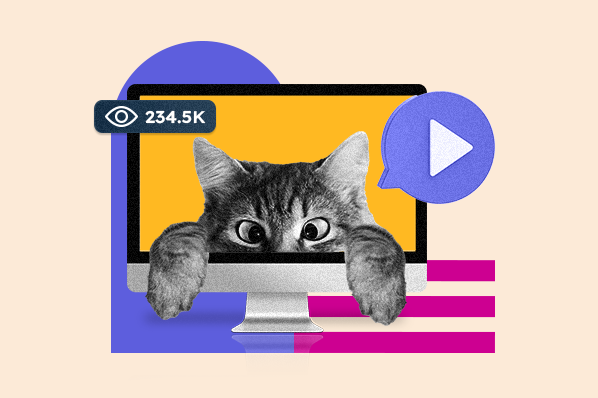
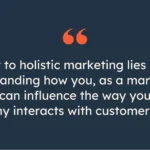

![Top B2B Video Marketing Trends to Inform Your Video Marketing Strategy [+ Data & Expert Insight] top-b2b-video-marketing-trends-to-inform-your-video-marketing-strategy-[+-data-&-expert-insight]](https://blog.contentkrush.com/wp-content/uploads/2024/12/140701-top-b2b-video-marketing-trends-to-inform-your-video-marketing-strategy-data-expert-insight-510x369.webp)

![45 Video Marketing Statistics for 2025 [New Data] 45-video-marketing-statistics-for-2025-[new-data]](https://blog.contentkrush.com/wp-content/uploads/2025/03/141042-45-video-marketing-statistics-for-2025-new-data-510x369.webp)

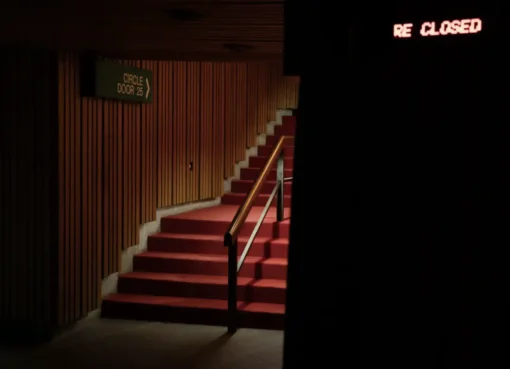
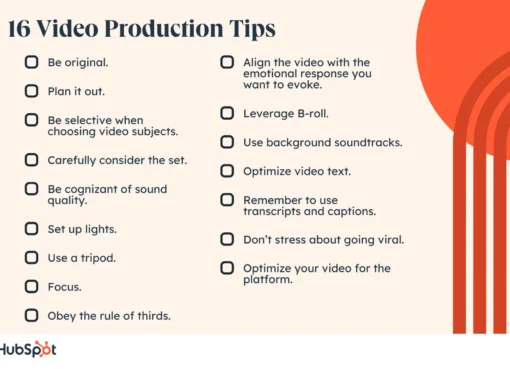

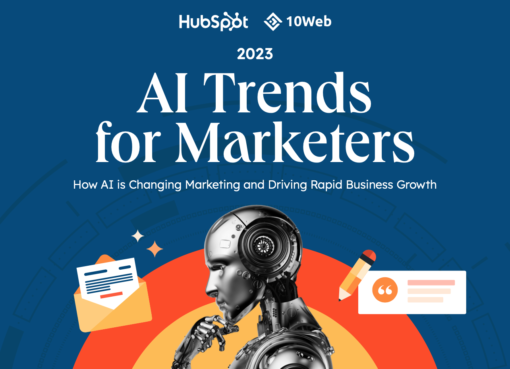

![How to Write a Video Script [Template + Video] how-to-write-a-video-script-[template-+-video]](https://blog.contentkrush.com/wp-content/uploads/2024/03/131395-how-to-write-a-video-script-template-video-510x369.jpg)

![The best social media platforms for video content in 2025 [consumer data] the-best-social-media-platforms-for-video-content-in-2025-[consumer-data]](https://blog.contentkrush.com/wp-content/uploads/2025/05/141452-the-best-social-media-platforms-for-video-content-in-2025-consumer-data-510x369.png)
![Why You Should Leverage Interactive Videos [Data from 500+ Marketers] why-you-should-leverage-interactive-videos-[data-from-500+-marketers]](https://blog.contentkrush.com/wp-content/uploads/2025/02/140972-why-you-should-leverage-interactive-videos-data-from-500-marketers-510x369.webp)
![Are In-Stream Video Ads Worth the Investment? [Benefits & Best Practices for Marketers] are-in-stream-video-ads-worth-the-investment?-[benefits-&-best-practices-for-marketers]](https://blog.contentkrush.com/wp-content/uploads/2025/03/141111-are-in-stream-video-ads-worth-the-investment-benefits-best-practices-for-marketers-510x369.webp)
![How Much Does an Explainer Video Actually Cost? [New Data] how-much-does-an-explainer-video-actually-cost?-[new-data]](https://blog.contentkrush.com/wp-content/uploads/2025/01/140777-how-much-does-an-explainer-video-actually-cost-new-data-510x369.jpeg)
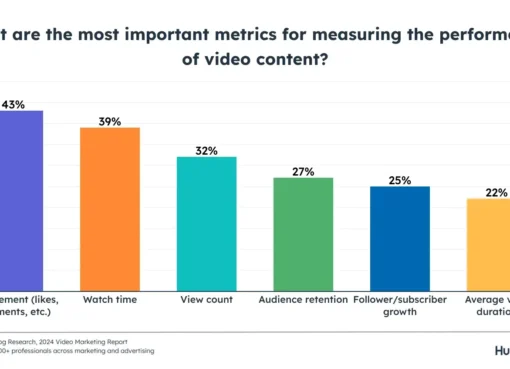


![The HubSpot Blog’s 2024 Video Marketing Report [Data from 500+ Video Marketers] the-hubspot-blog’s-2024-video-marketing-report-[data-from-500+-video-marketers]](https://blog.contentkrush.com/wp-content/uploads/2024/11/140519-the-hubspot-blogs-2024-video-marketing-report-data-from-500-video-marketers-510x369.webp)
![3 Short-Form Video Trends Marketers Should Watch in 2025 [New Data] 3-short-form-video-trends-marketers-should-watch-in-2025-[new-data]](https://blog.contentkrush.com/wp-content/uploads/2025/03/141161-3-short-form-video-trends-marketers-should-watch-in-2025-new-data-510x369.png)









Comment here